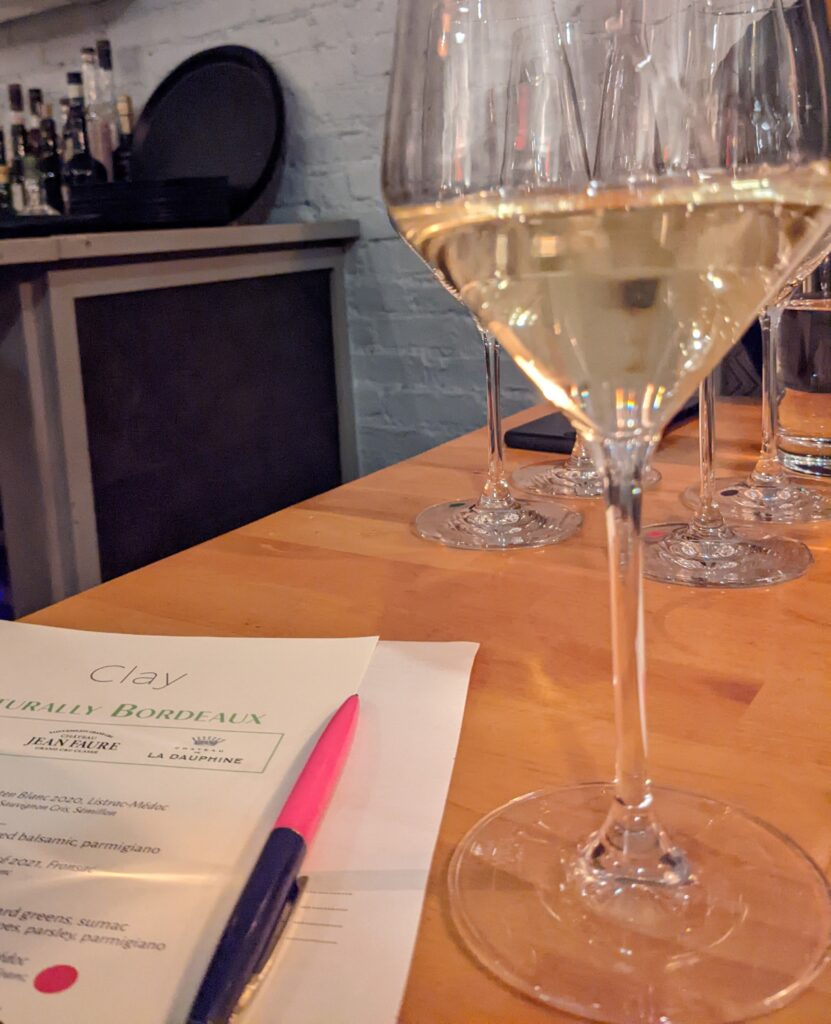
With her very apt metaphor, at the recent Naturally Bordeaux event, Mary Gorman-McAdams, MW, explained that big ships are hard to change course, but, with time, they do make the transformation. Similarly, Bordeaux, which is the largest quality wine region in France, has finally made a turn of its own with its more recent embrace of sustainable agriculture. Now that Bordeaux is moving in this new direction, it has been full steam ahead.
Consequently, Bordeaux has significantly increased its acreage of organic vineyards, which, as reported by James Lawther, MW currently stands at 34,333 acres. He further noted that this figure, when added to the biodynamically-certified acreage, accounts for 14% of the region’s vineyards.
Moreover, Mary shared that there has been a collective focus throughout the region on implementing the new Haute Valeur Environnementale (HVE) certification, a three-tiered system that was launched in France in 2001. This program “encourages farms and vineyards to focus on increasing biodiversity, decreasing the negative environmental impact of their phyto-sanitary strategy (i.e., measures for the control of plant diseases, reducing the use of pesticides and fungicides), managing their fertilizer inputs, and improving water management.” ~Discover Sustainable Wine
The HVE program has been whole-heartedly adopted by the Conseil Interprofessionnel du Vin de Bordeaux which plans to have 100% compliance among Bordeaux producers by 2030. Early adopters, the Cru Bourgeois du Médoc mandated that each chateau must have achieved at least minimum level HVE certification requirements as part of the application process to be considered for Cru Bourgeois status. Lawther advised that it has also been implemented as a requirement by the St.-Emilion appellation. Overall, the Bordelais are taking a holistic picture, including measures that address corporate responsibility.
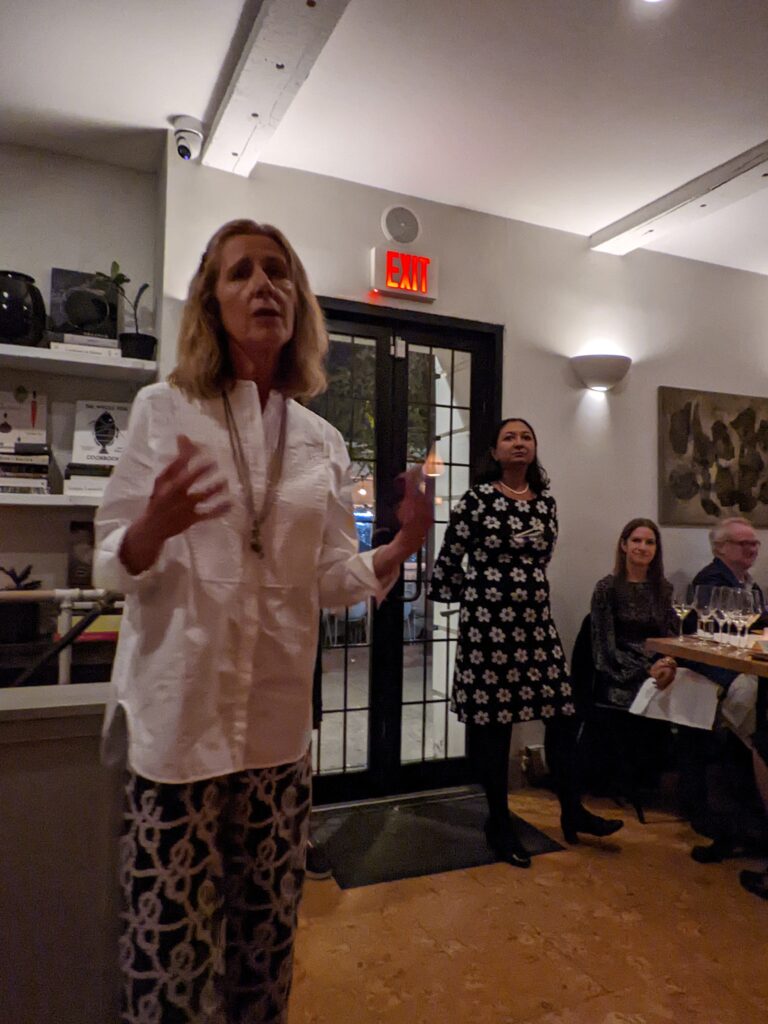
Other changes in the region include not only an increase in rosé production, but a shift in its approach to producing these wines. To this end, rosé now makes up 4% of Bordeaux’s production and producers are making rosé on purpose these days. Accordingly, today’s wines utilize direct press production instead of the saignée method, which had previously been implemented primarily as a way to beef up the reds. For the most part, the resulting rosé wine made in this manner was an afterthought.
I recently had the pleasure of being introduced (or in one case, reintroduced) to three Bordeaux producers who are actively engaged in organic viticulture at the Naturally Bordeaux event, which was held at Clay Restaurant in New York city’s Harlem neighborhood. Clay was chosen because it is farm-to-table, serving only seasonal, locally-sourced products on its menu. Thus, it was the perfect setting for a dinner featuring sustainable Bordeaux wines.
The wines showed beautifully, providing the opportunity to taste white, rosé and red wines from a variety of vintages. They say the proof is in the pudding and it was clear from this tasting that these are fabulous, well-made wines that you can feel good about drinking given their commitment to the environment. And Clay’s chocolate budino (an Italian pudding) (as well as the entire meal) was fantastic too!

Chateau Fourcas Hosten
Owned by two brothers, Chateau Fourcas-Hosten has a long history on the Left Bank and has been focused on organics and sustainability for the past decade. They achieved HVE3 certification in 2017 and have taken the further step to convert their vines to organic viticulture, starting first with their whites and then expanding to their reds. Full certification of their 50 hectares was received in 2021. Of course, their first goal is to make good wines, and, in this manner, they have recognized the need to adapt the right variety to the right terroir. They have also made investments in the winery as well.
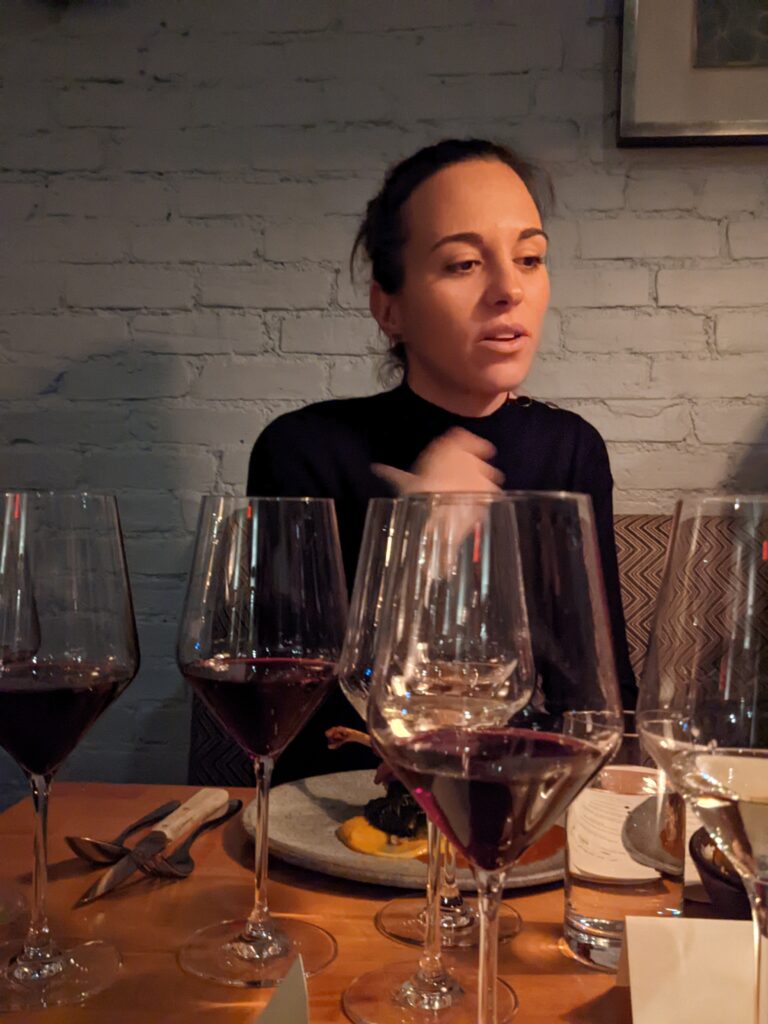
Chateau La Dauphine
Situated on the Right Bank, this historic chateau comprises 160 acres of vineyards with a mix of limestone, clay and molasse soils. The property itself dates to the late 1600s, with a more modern history dating to 2001 when the Halley family purchased the estate and invested 10 million Euros to significantly improve the land and winery. Chateau de la Dauphine earned organic certification in 2015, the same year that the property was sold to the Labrune family. It has since added biodynamic methods as well. Among other changes in the vineyards, they have been increasing their plantings of Cabernet Franc due to their soil types as well as due to climate change.
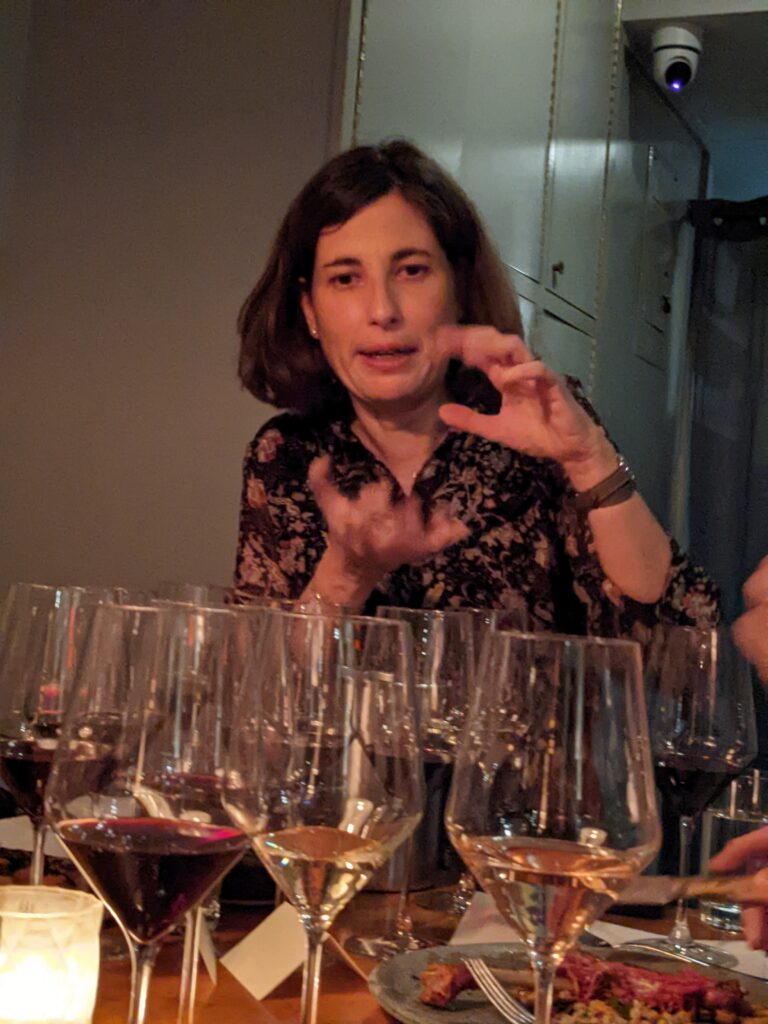
Chateau Jean Faure
This St.-Emilion Grand Cru Classé producer can trace its origins to a deed dated 1526. It has, of course, changed hands numerous times since then, with its latest acquisition in 2004, when it was purchased by Anne and Olivier Decelle. Their first certified organic vintage was 2017. Since 2020, they have engaged in biodynamic practices and will earn full certification from Biodyvin in 2023. Extensive research has been done on the estate’s predominantly clay terroir, which has always been heavily planted to Cabernet Franc (60%). This will prove to be even more useful as temperatures rise, given that Cabernet Franc has a longer maturity than Merlot.
MENU & TASTING NOTES
First course: Radicchio, spiced walnut, aged balsamic, parmigiano
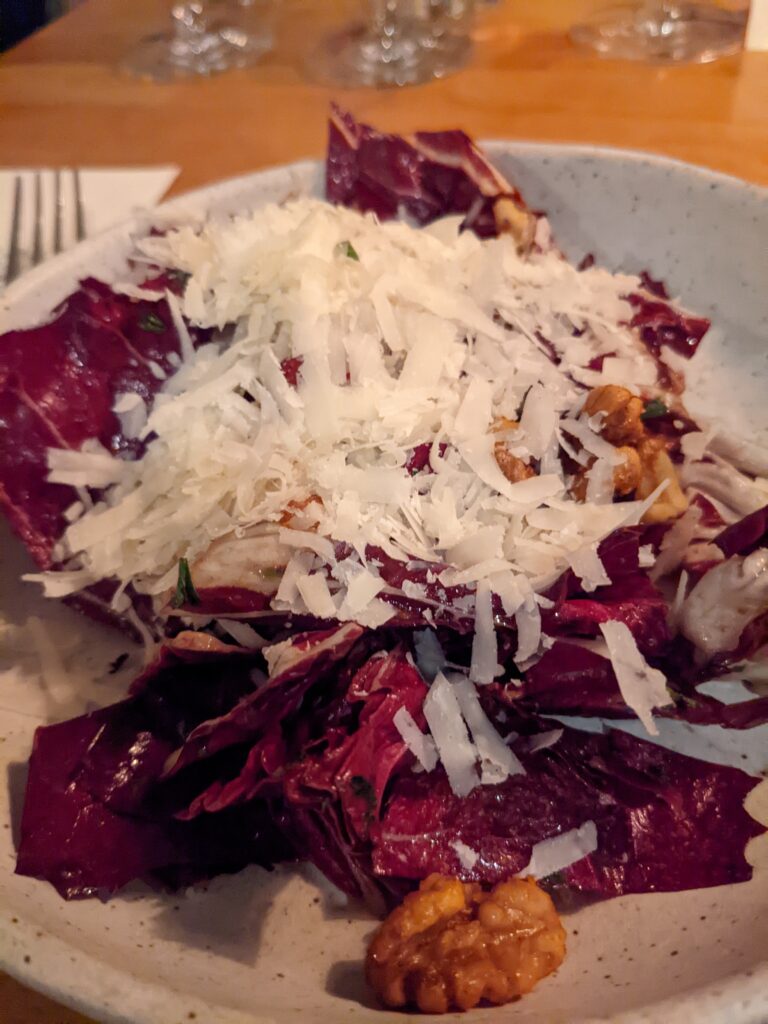
Chateau Fourcas Hosten Blanc 2020, Listrac-Medoc, Bordeaux
Planted on limestone soils, which helps preserve the beautiful acidity, this wine is a blend of 67% Sauvignon Blanc, 18% Sauvignon Gris, and 15% Semillon. It offers up herbal and citrus aromas on the nose, giving way to riper pineapple on the bright palate, culminating with long length.
Chateau La Dauphine Rosé 2021, Fronsac, Bordeaux
This very pale hued rosé brings together 80% Merlot and 20% Cabernet Franc, grown on a plot earmarked specifically for the production of rosé. Instead of a maceration, they use a pneumatic press to extract the juice and a touch of color. This wine was first made in 2016, when Monsiur Labrune decided to produce a rosé especially for his wife. With slight herbs and delicate strawberry and melon fruit, the palate is vibrant with a hint of salinity and long length.
Main course: Confit duck leg, carrot, smoked farro, collard greens, sumac
Side dishes: Mushrooms with thyme and shallot | Duck fat potatoes, with parsley and parmigiano
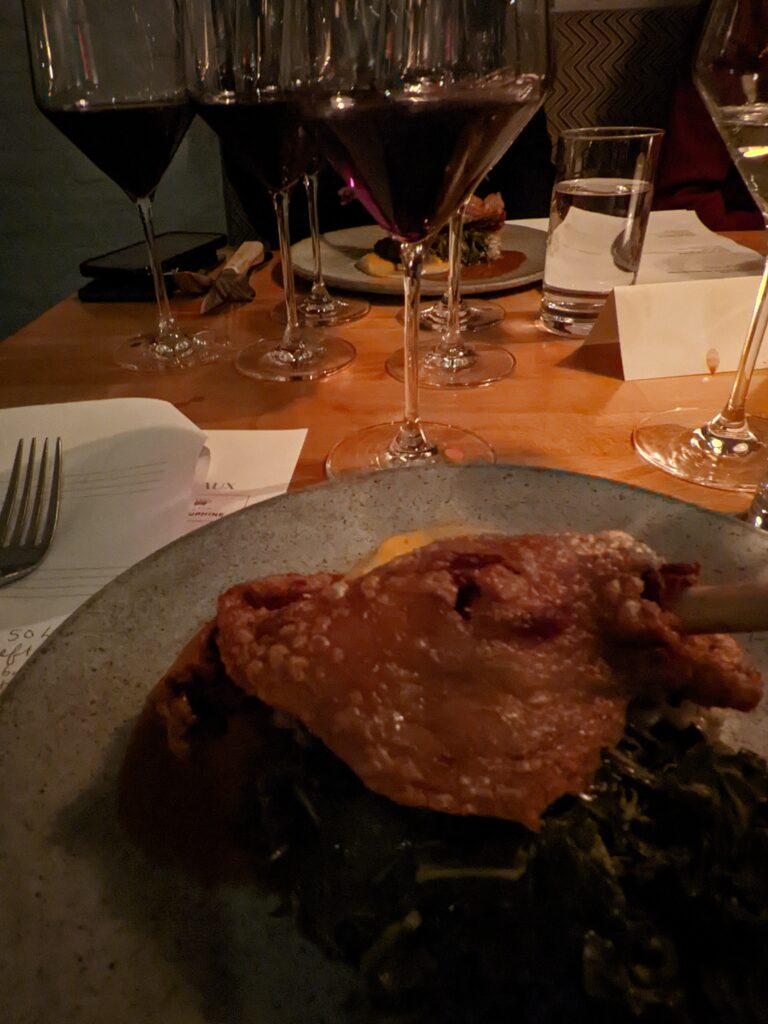
Chateau Fourcas Hosten 2018, Listrac-Medoc, Bordeaux
This blend of 58% Merlot, 38.5% Cabernet Sauvignon, 2.5% Petit Verdot, and 1% Cabernet Franc displays plum, other black fruit, oak and vanilla, with firm ripe tannins and good length.
Chateau Jean Faure 2015, St.-Emilion Grand Cru, St.-Emilion, Bordeaux
Produced with 50% Cabernet Franc, 45% Merlot and 5% Malbec from a very sunny vintage, this wine offered up ripe, spicy, red fruit, along with freshness, culminating in long length.
Chateau La Dauphine 2012, Fronsac, Bordeaux
A blend of 90% Merlot and 10% Cabernet Franc, this is beautifully developed with black and red fruit, ripe tannins, and very long length.
Dessert: Chocolate budino, spiced candied pecan, meringue
Chateau Jean Faure 2010, St.-Emilion Grand Cru, St.-Emilion, Bordeaux
Bring together the same blend as the 2015 vintage, this wine was still quite fresh despite its age. Showing some development, with aromas and flavors of blackberry, herbs, oak, and vanilla, with ripe tannins and long length.
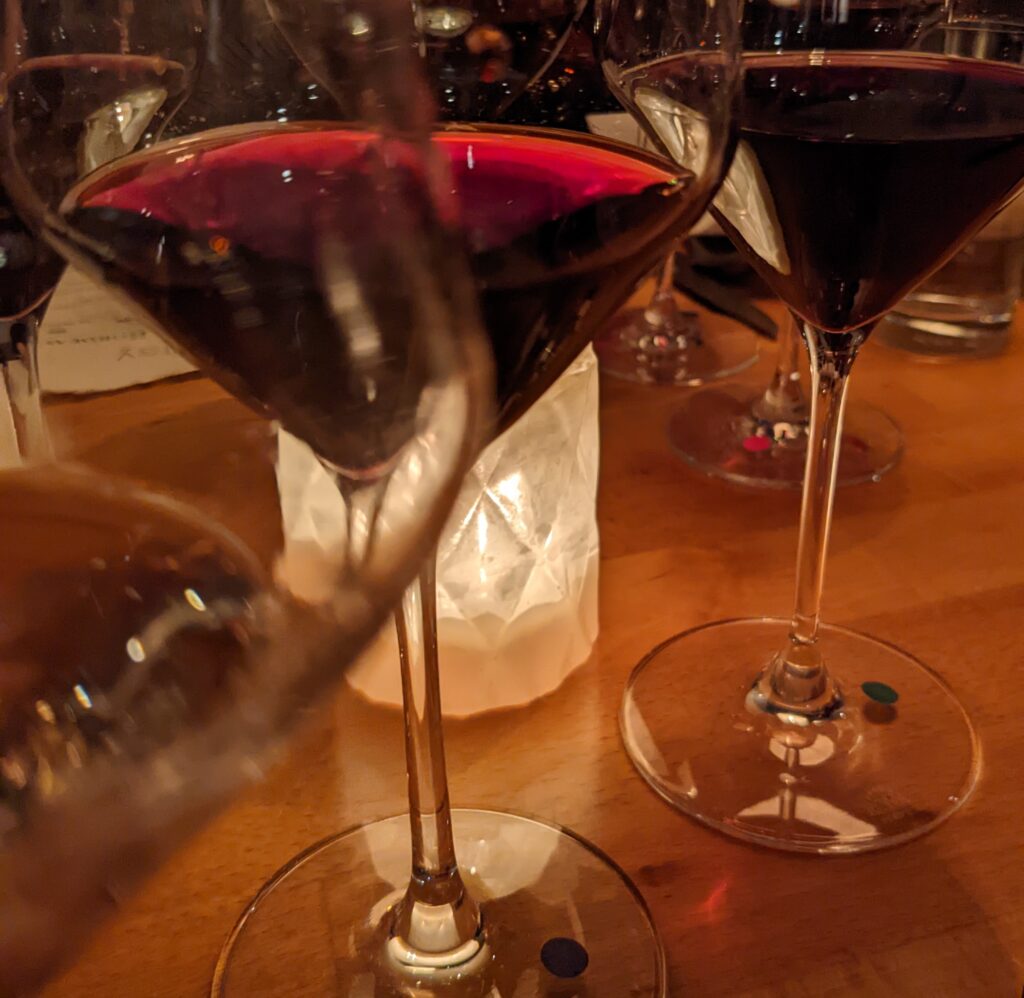


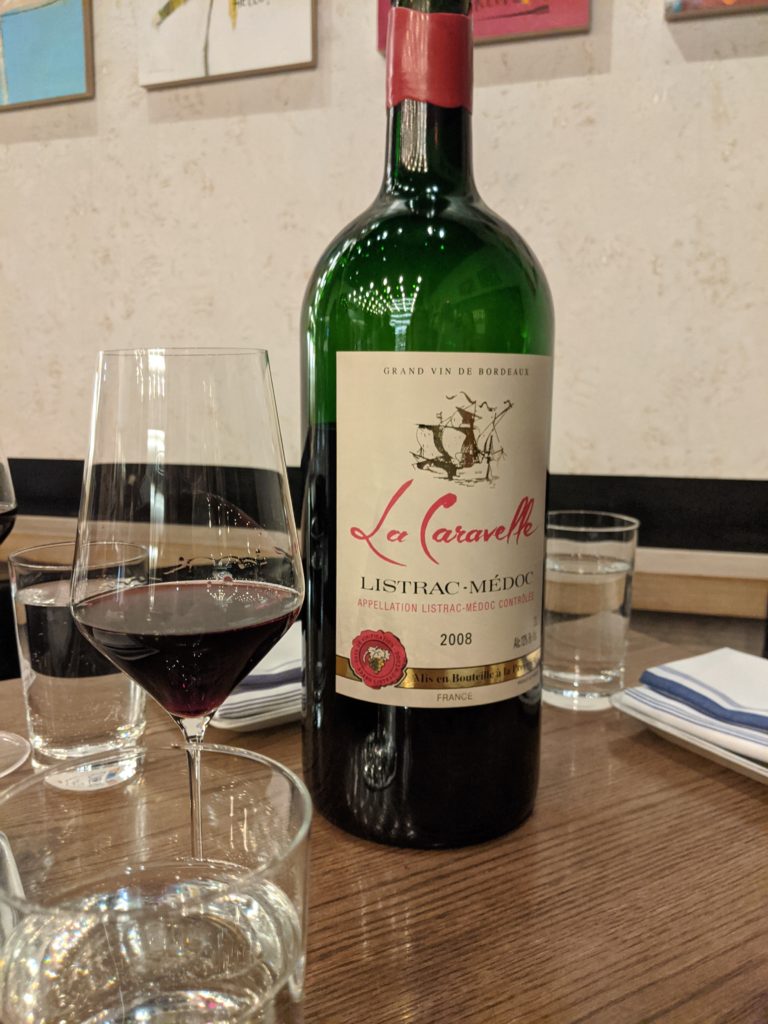

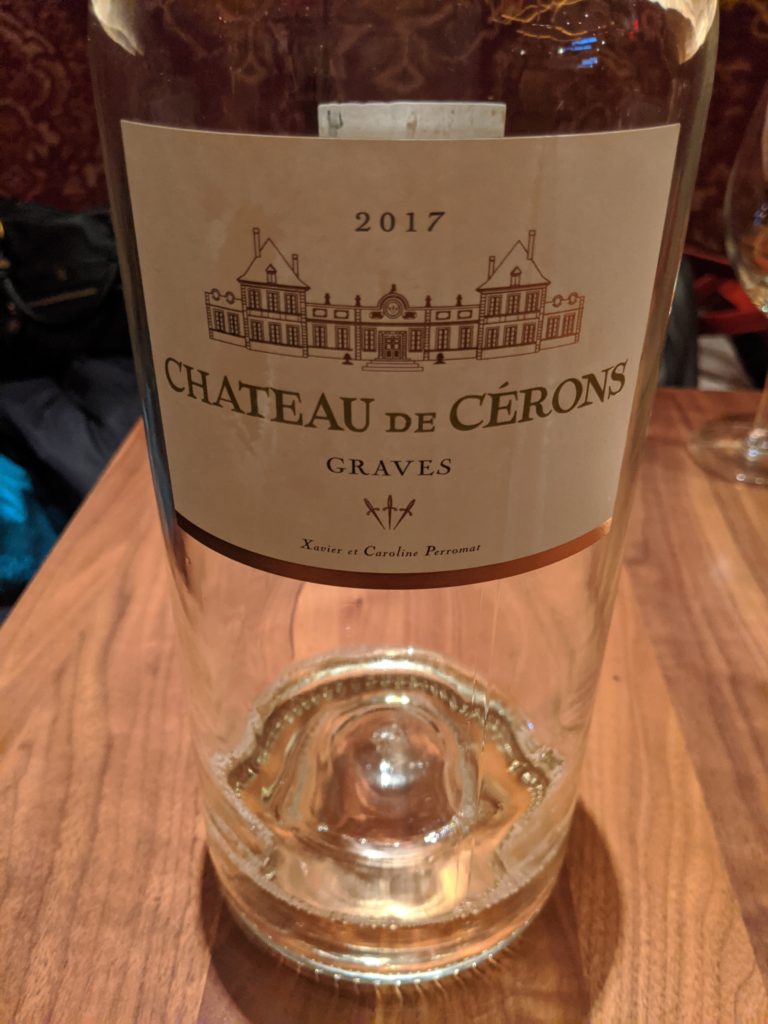
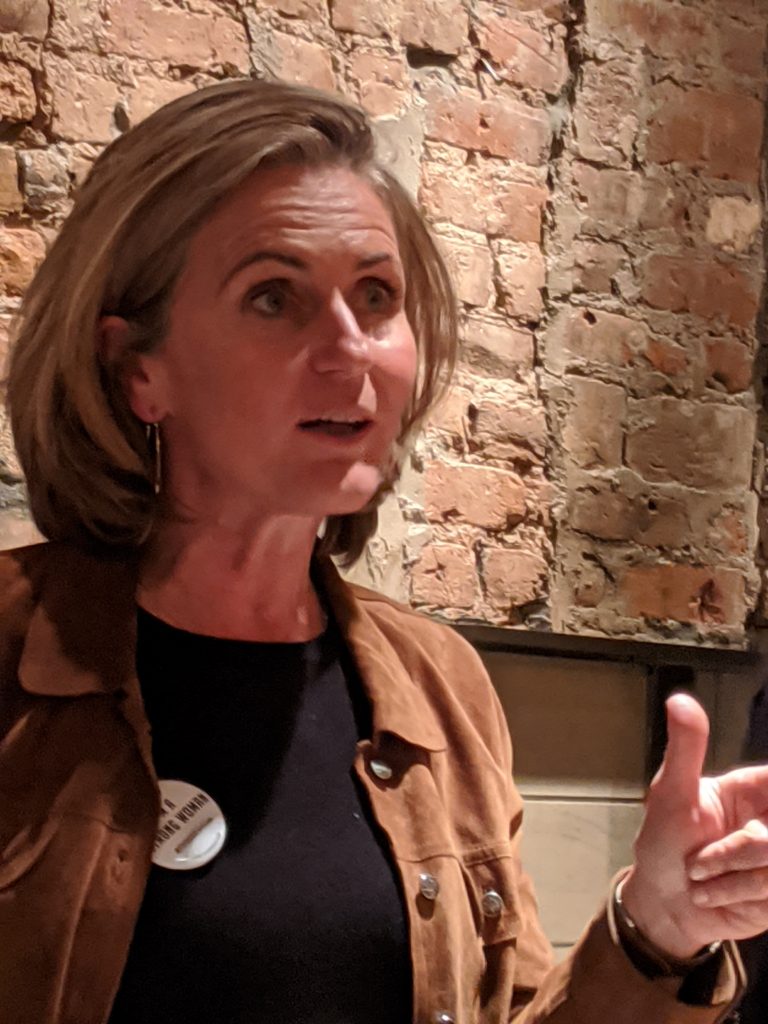
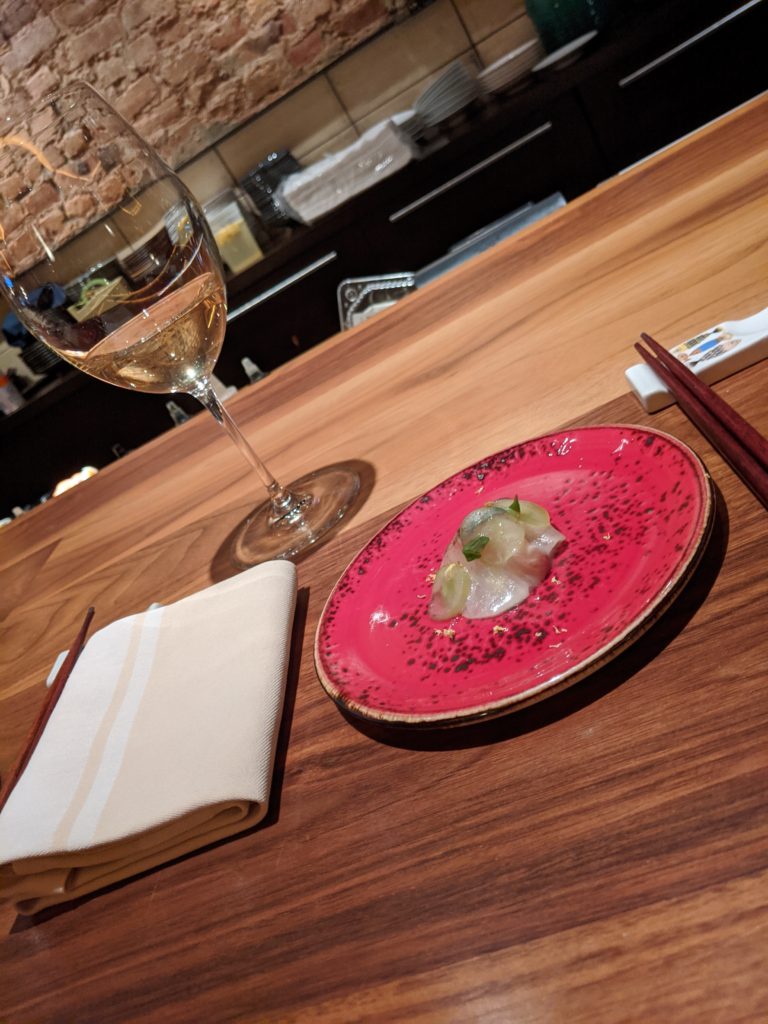
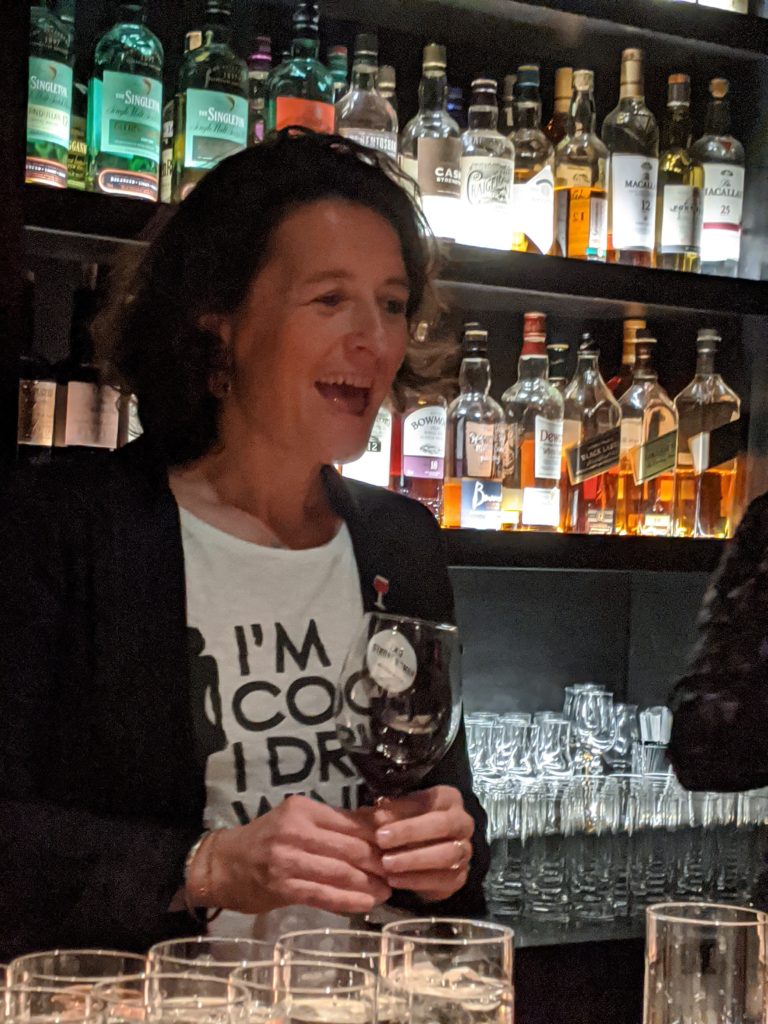
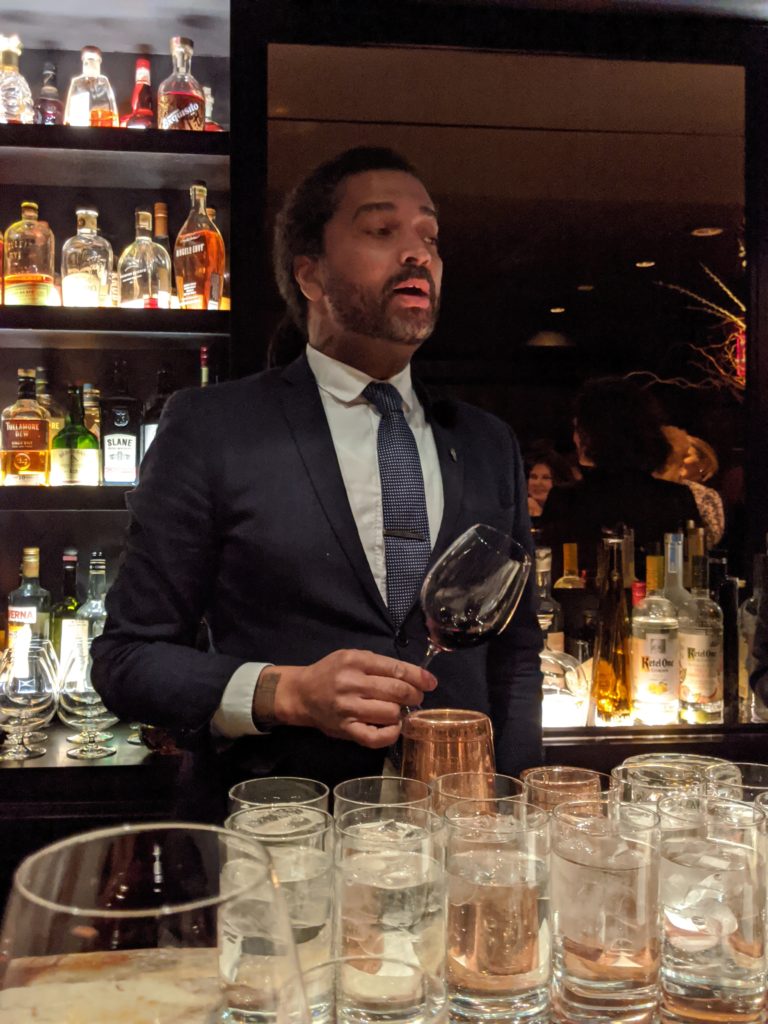
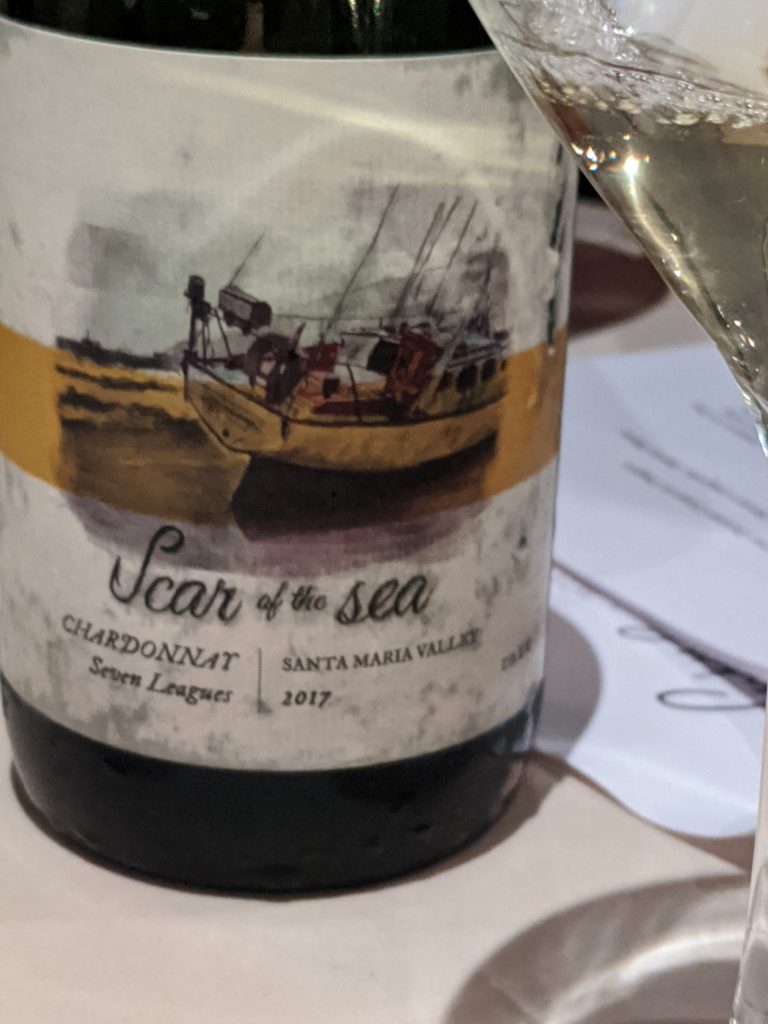
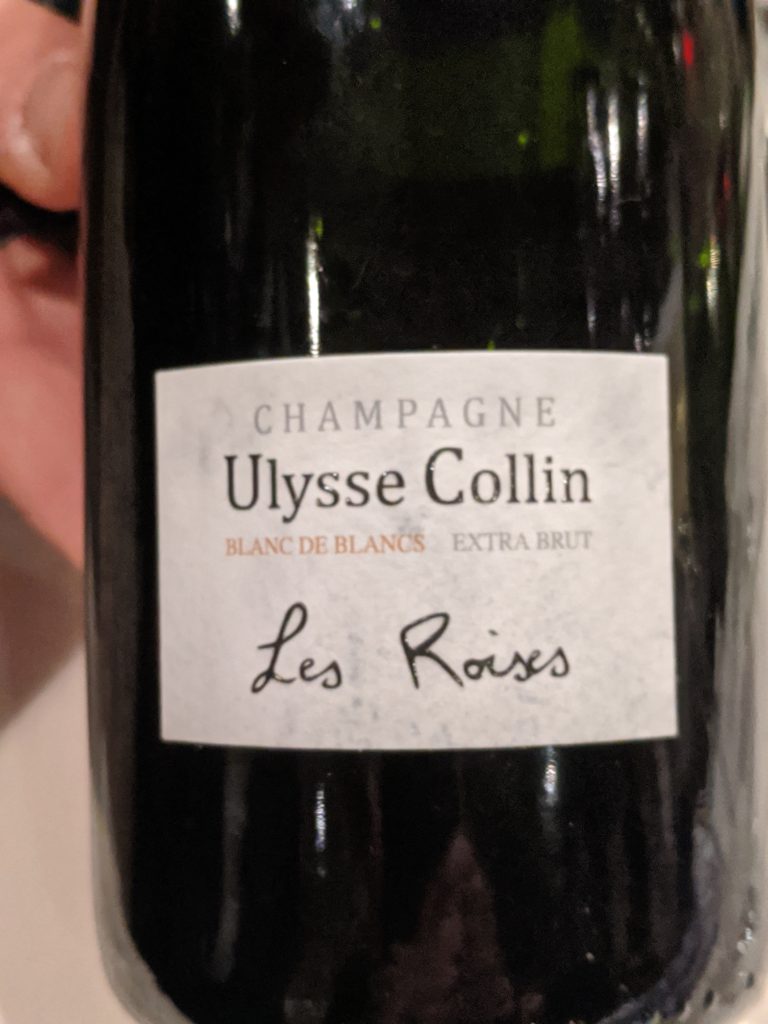
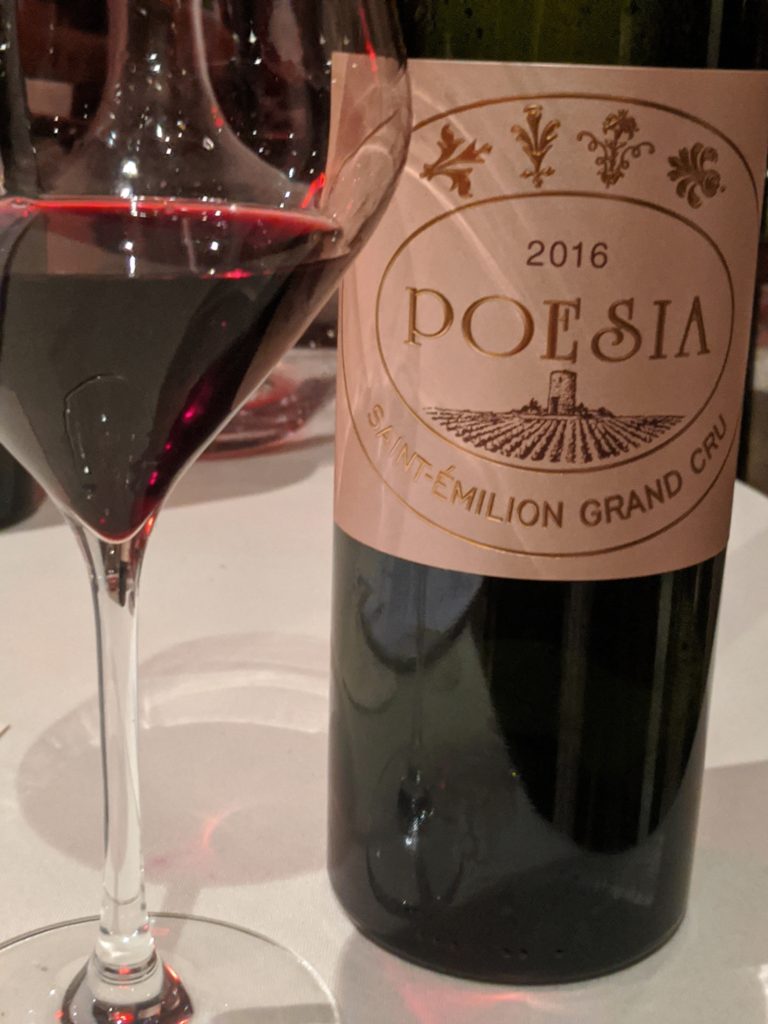
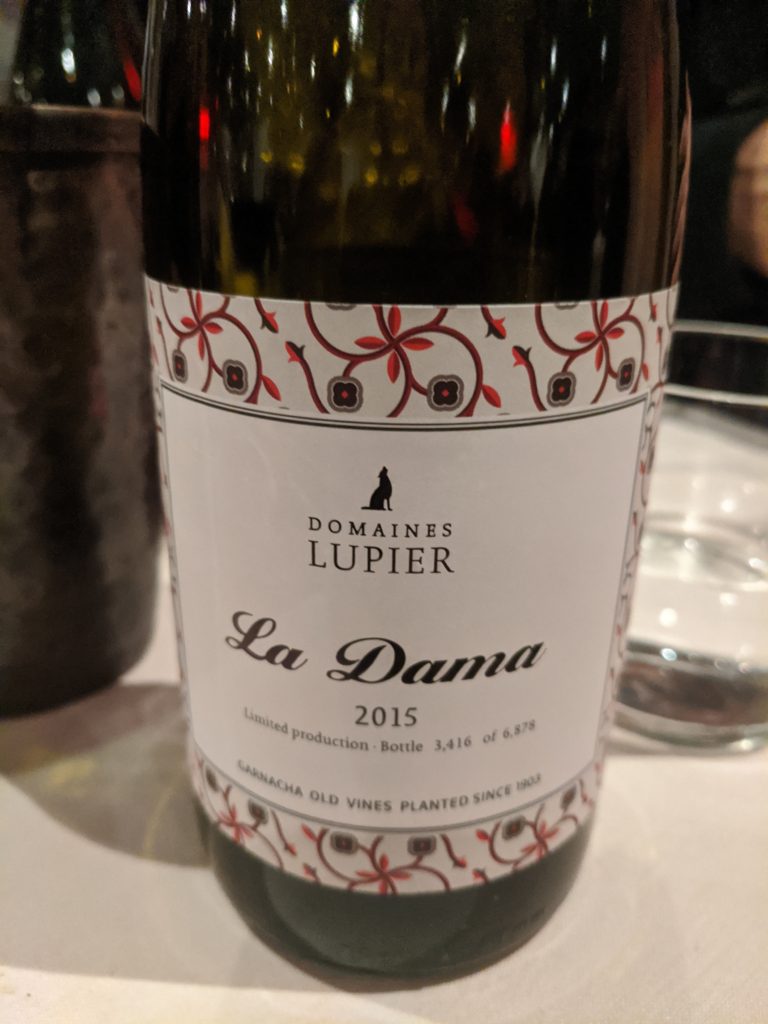
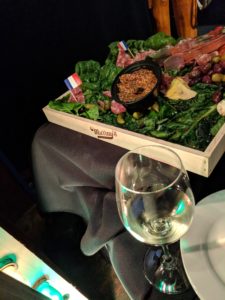

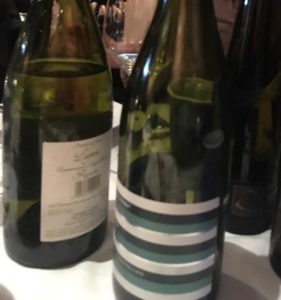

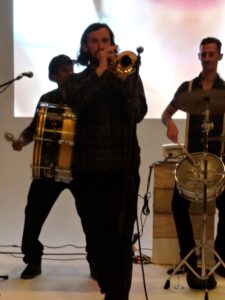
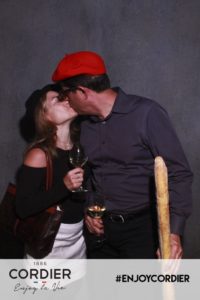
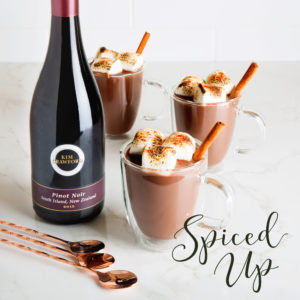
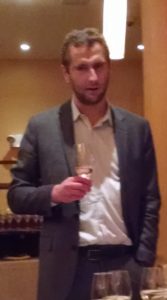
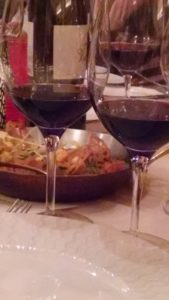
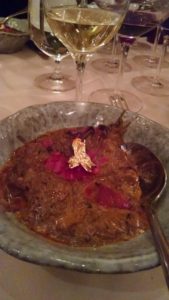

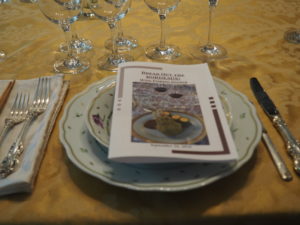
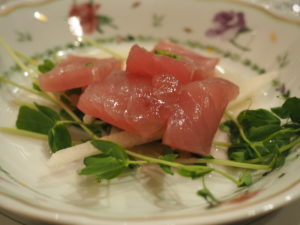
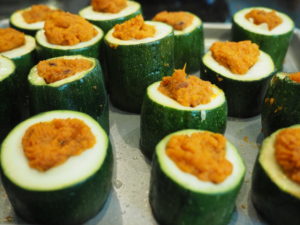
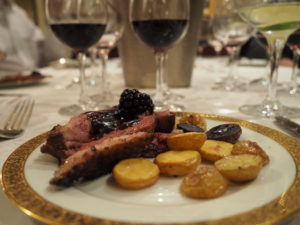
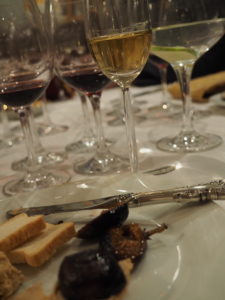
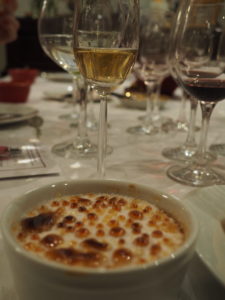
 the forest. After walking for awhile, she came upon a house. She knocked and, when no one answered, she walked right in.
the forest. After walking for awhile, she came upon a house. She knocked and, when no one answered, she walked right in.